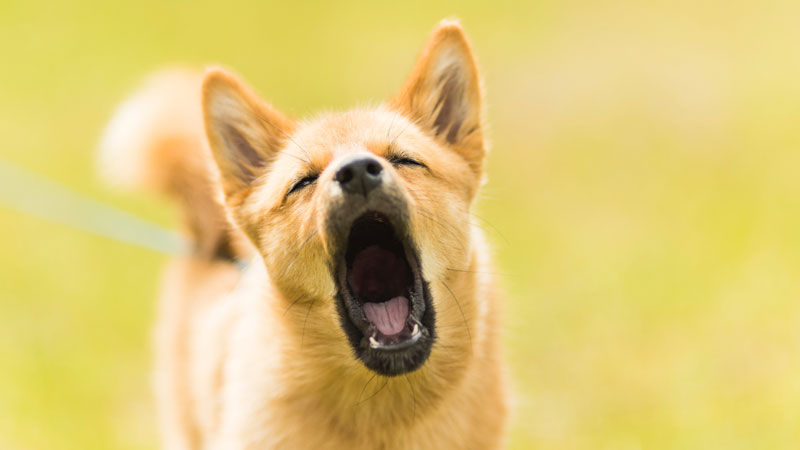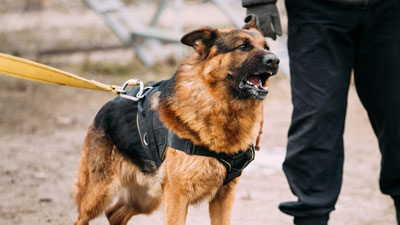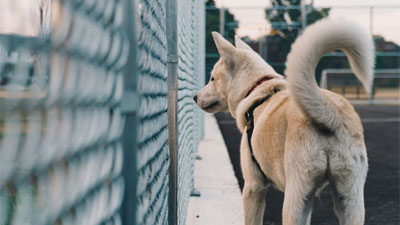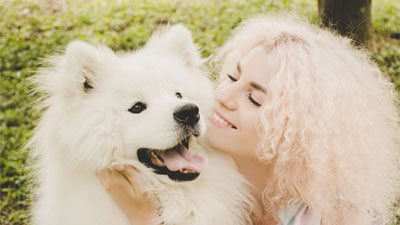- Size
- Smallest
- Small
- Small to Medium
- Medium
- Large
- Giant
- Characteristics
- Smartest
- Hypoallergenic
- Fluffy
- Best Guard
- Best Family
- Best for Kids
- Low Shedding
- Healthiest
- Police Dogs
- Most Calm
- Quietest
- Color
- White
- Black
- Grey
- Brown
- Blue
- Red
- Coat
- Hairless
- Short
- Long
- Origin
- Japan
- China
- Australia
- Germany
- Italy
- United States
- France
- Group
- Hound
- Terrier
- Herding
- Toy
- Working
- Sporting
The 6 Common Dog Sounds and Their Meanings

Photo by Robert Gramner on Unsplash
Dogs have an extensive range of vocalizations and sounds, each carrying a unique message that communicates their emotional state and needs. From barking and growling to whining, howling, and even groaning, dogs use their voices to convey a wide range of emotions. Interpreting the various sounds that dogs make can provide valuable insights into their emotions, needs, and intentions.
In this article, we will explore the meaning behind these different types of sounds, helping you to understand your dog's vocal language and strengthen your bond.
The following is an interpretation of the 6 different types of dog sounds :
1. Barking
Barking is perhaps the most common vocalization that dogs make, and it's not just for alerting their humans to potential dangers. Dogs bark to communicate a wide range of emotions and needs, including:
Attention: Dogs may bark to get the attention of their owners or other dogs. This type of barking is usually high-pitched and may be accompanied by other behaviors like pawing or jumping.
Warning: Dogs bark to warn of approaching danger or to establish boundaries. This type of bark is usually deeper and more prolonged than other types of barking.
Anxiety: Dogs may bark when feeling anxious or nervous, especially when they are left alone. The pitch and duration of this type of barking may be higher and more prolonged than other types of barking, often accompanied by other signs of distress such as panting or pacing.
2. Whining
Whining is a vocalization that dogs use to communicate a wide range of emotions, including:
Need: Dogs may whine to communicate their needs, such as the need for food, water, or to go outside. This type of whining is usually soft and high-pitched.
Attention: Similar to barking, dogs may whine to get the attention of their owners or other dogs. This type of whining is usually continuous and can be accompanied by behaviors like pawing or nudging.
Anxiety: Dogs may whine when feeling anxious or scared. This type of whining is usually high-pitched and may be accompanied by other signs of anxiety such as trembling or panting.
3. Growling
Growling is a vocalization that dogs use to convey a wide range of emotions, including:
Warning: Dogs may growl to warn others to stay away or to establish boundaries. This type of growling is usually low-pitched and may be accompanied by other behaviors such as baring teeth or a stiff posture.
Play: Dogs may growl during play to signify enjoyment and excitement. This type of growling is usually high-pitched and accompanied by other behaviors such as wagging tails or play bows.
Fear: Dogs may growl when feeling scared or anxious. This type of growling is usually high-pitched and may be accompanied by other signs of fear or anxiety such as cowering or trembling.
4. Howling
Howling is a vocalization that dogs use to convey a wide range of emotions and to communicate over long distances, including:
Communication: Dogs may howl to communicate their whereabouts to their owners or other dogs. This type of howling is usually long and drawn-out, and may be accompanied by other behaviors like raised ears or a tilted head.
Response: Dogs may howl in response to different types of sounds, such as sirens or musical instruments. This type of howling is usually continuous and may increase in intensity.
Separation anxiety: Dogs may howl when feeling lonely or anxious. This type of howling is usually continuous and may be accompanied by other signs of separation anxiety such as destructive behaviors.
5. Sighing
Sighing is a type of sound that dogs make to communicate a range of emotions, including:
Relaxation: Dogs may sigh when feeling relaxed or content. This type of sighing is usually soft and accompanied by other relaxed behaviors such as lying down or dozing.
Frustration: Dogs may sigh when feeling frustrated. This type of sighing is usually more audible and may be accompanied by other behaviors such as pacing or barking.
6. Groaning
Groaning is a type of sound that dogs make to communicate discomfort or pain, including:
Pain: Dogs may groan when feeling pain or discomfort. This type of groaning is usually low-pitched and may be accompanied by other signs of pain such as limping or wincing.
Discomfort: Dogs may groan when feeling uncomfortable due to different reasons such as being too hot or hungry. This type of groaning is usually softer and may be accompanied by other behaviors such as stretching.
Specific Dog's Vocal
It's important to note that individual dogs within breeds may vary in the range and frequency of their vocalizations. Understanding your specific dog's vocal language and accompanying body language will help you better interpret and respond to their needs and emotions.
Purring: While not as common as in cats, some dogs, like Rottweilers, may produce a purr-like sound when content and relaxed. This rumbling sound is typically low-pitched and similar to a cat's purring.
Talking: Certain breeds, like Siberian Huskies, may vocalize in a way that resembles human speech. They make a range of expressive sounds, often interpreted as "talking" or "muttering."
Screaming: Shiba Inus may produce a high-pitched scream-like sound, often called the "Shiba scream." Although it can be alarming, this vocalization is typically a normal way of expressing excitement, frustration, or fear.
Yodeling: Basenjis are known for their unique yodel-like vocalization, often referred to as the "Basenji yodel." This sound is a series of high-pitched, baying-like vocalizations that are different from traditional barking.
Conclusion
While certain breeds showcase unconventional sounds, the majority of dogs rely on common vocalizations to convey a myriad of meanings. From barking and whining to growling, howling, sighing, and groaning, these universal sounds serve as the foundation of canine communication. Context, pitch, and accompanying body language play pivotal roles in deciphering the nuanced messages dogs convey.
You May Also Like
 Dog BreedsThe 10 Dog Breeds with Prominent Hackles
Dog BreedsThe 10 Dog Breeds with Prominent Hackles Dog BehaviorWhat Do The Different Dog Tail Positions Mean?
Dog BehaviorWhat Do The Different Dog Tail Positions Mean? Dog BehaviorWhat Does It Mean When A Dog's Hackles Stand Up?
Dog BehaviorWhat Does It Mean When A Dog's Hackles Stand Up? Help & AdviceWhat Is The Hardest Dog Trick?
Help & AdviceWhat Is The Hardest Dog Trick? Dog Training TipsHere are the 7 Most Important Dog Commands
Dog Training TipsHere are the 7 Most Important Dog Commands Dog Training Tips5 Easy Steps: How to Teach a Dog to Smile
Dog Training Tips5 Easy Steps: How to Teach a Dog to Smile